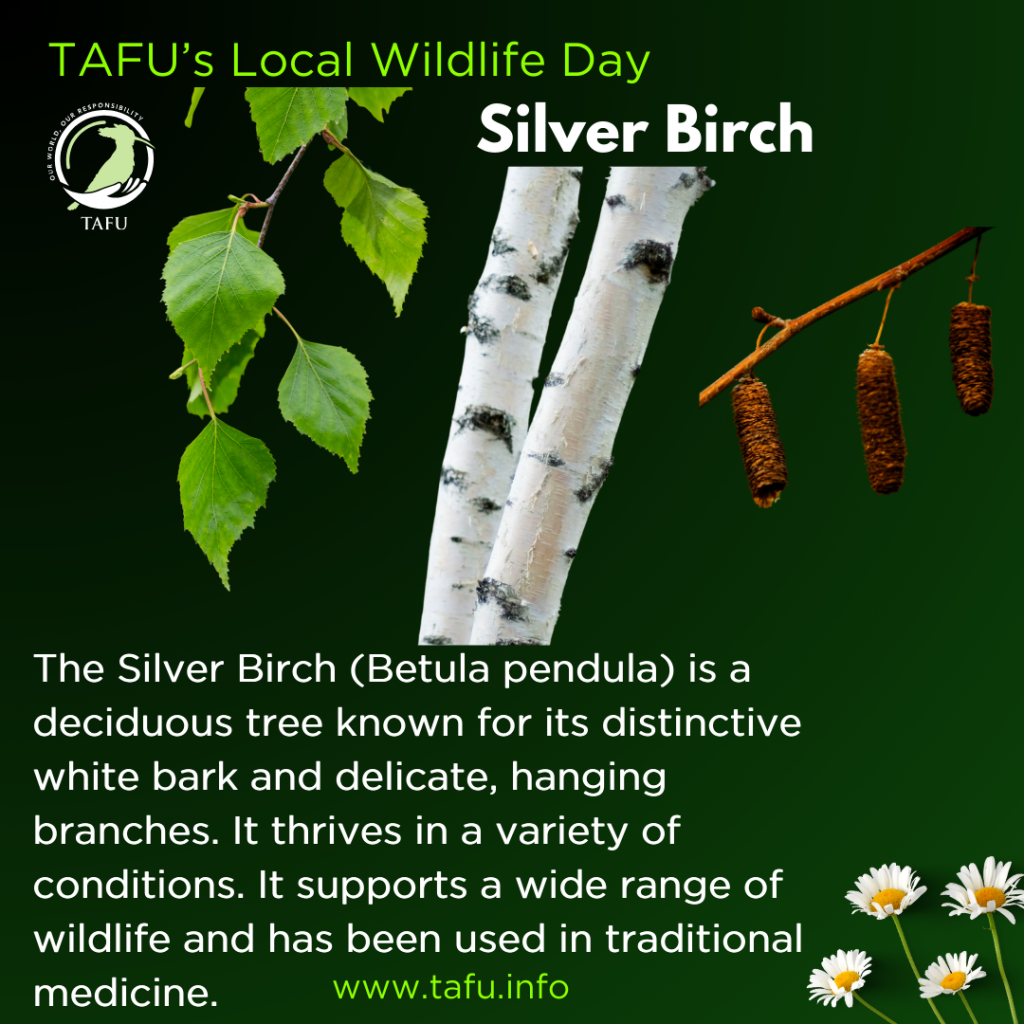Silver Birch
As part of the countdown to TAFU’s Local Wildlife Day on the 11th of July – Species no. 38.
Stay tuned – 5 more days and 5 more species until then!
The Silver Birch (Betula pendula), also known as European White Birch, is a medium-sized deciduous tree that can grow up to 15-25 meters in height. It is easily recognised by its striking white, papery bark, which peels away in thin layers, and its slender, pendulous branches. The leaves are triangular with serrated edges, turning a vibrant yellow in the autumn.
Silver Birch is a highly adaptable tree that thrives in a wide range of soils, from sandy and acidic to well-drained loams. It is commonly found in mixed woodlands, heathlands, and on the edges of forests. Its shallow root system makes it less tolerant of waterlogged soils but allows it to colonise disturbed soil quickly, making it a pioneer species in ecological succession.
This tree is ecologically significant, providing habitat and food for numerous species of birds, insects, and fungi. The leaves and catkins of the Silver Birch are a food source for caterpillars of various moth species, and its seeds are eaten by birds such as redpolls and greenfinches. The tree’s bark and wood are also home to many species of fungi, including the notable Birch Polypore.
Silver Birch has been utilised in traditional medicine for centuries. The sap, rich in sugars, can be tapped in the spring and fermented to produce birch wine or used as a traditional remedy for skin ailments and joint pain. The bark has been used to make containers, roofing, and even writing material.
The tree flowers from April to May, producing long, yellow-brown catkins that release pollen into the wind. This wind pollination is essential for the tree’s reproduction, leading to the development of small, winged seeds that disperse over long distances.
Avoiding the use of chemical pesticides and fertilisers can help maintain a healthy environment for these trees and the organisms that depend on them, hence maintaining a healthy ecosystem.

